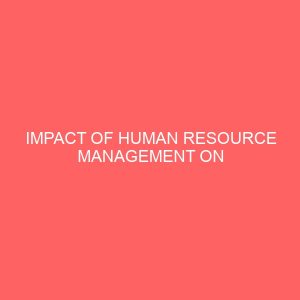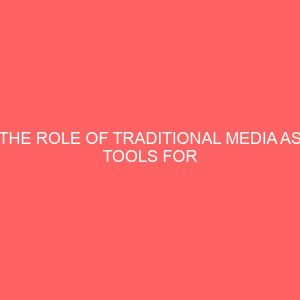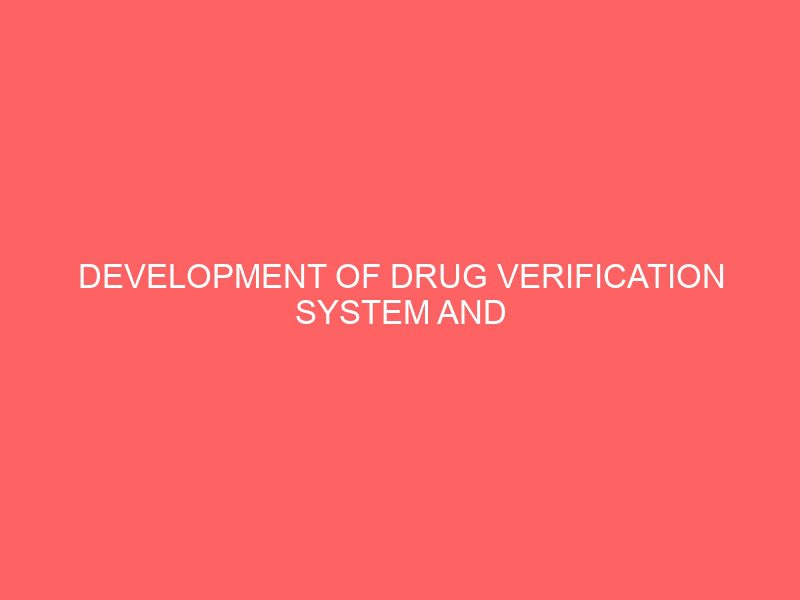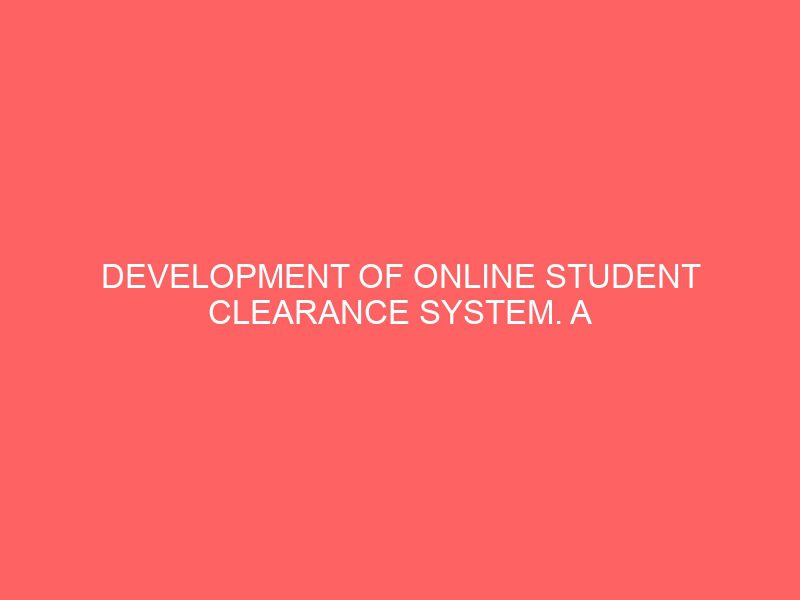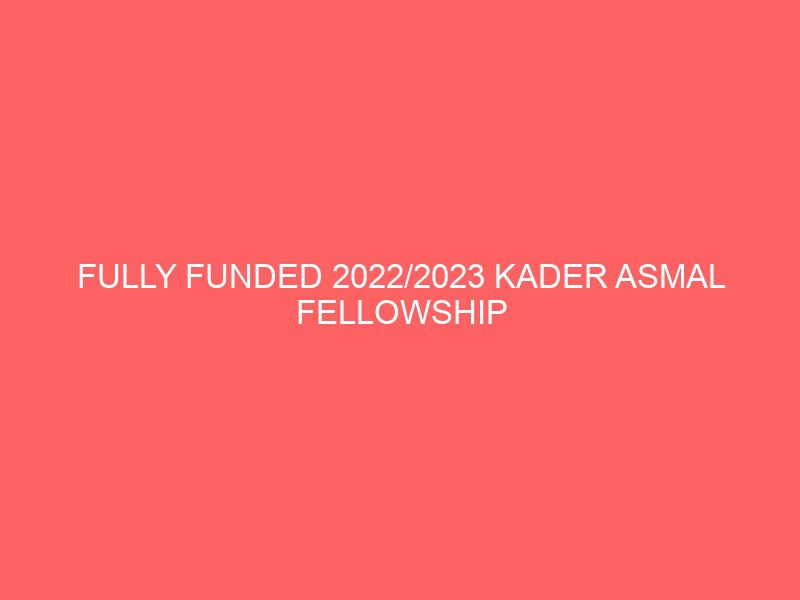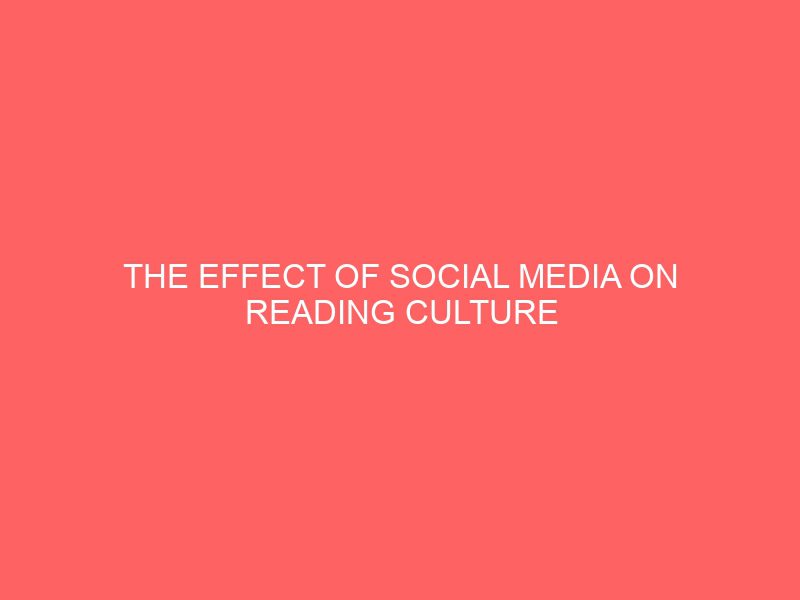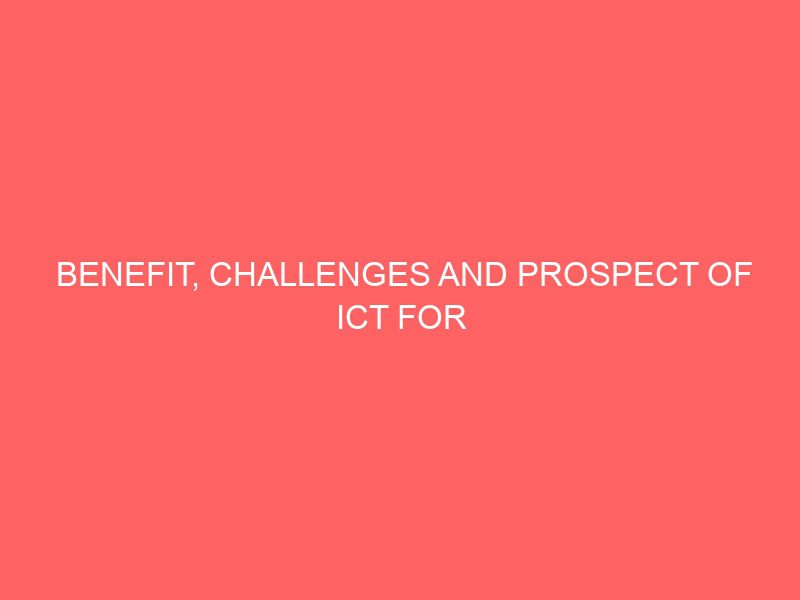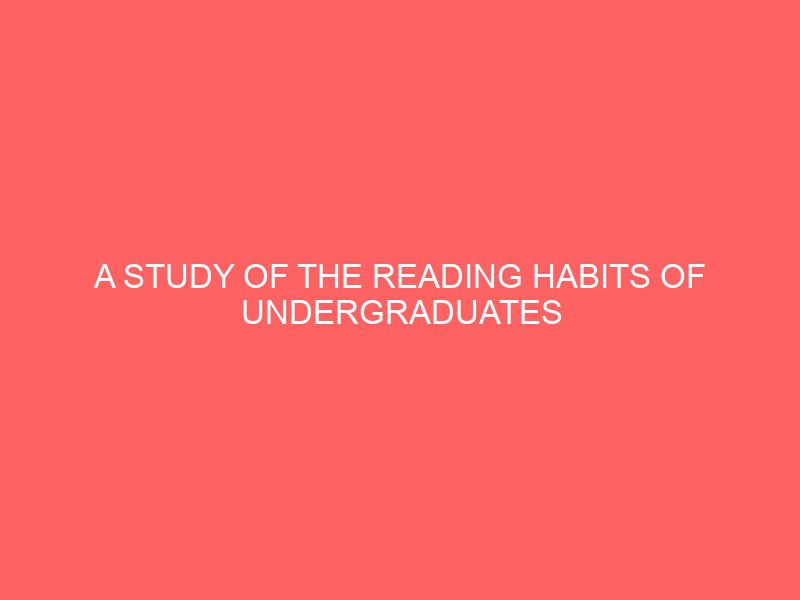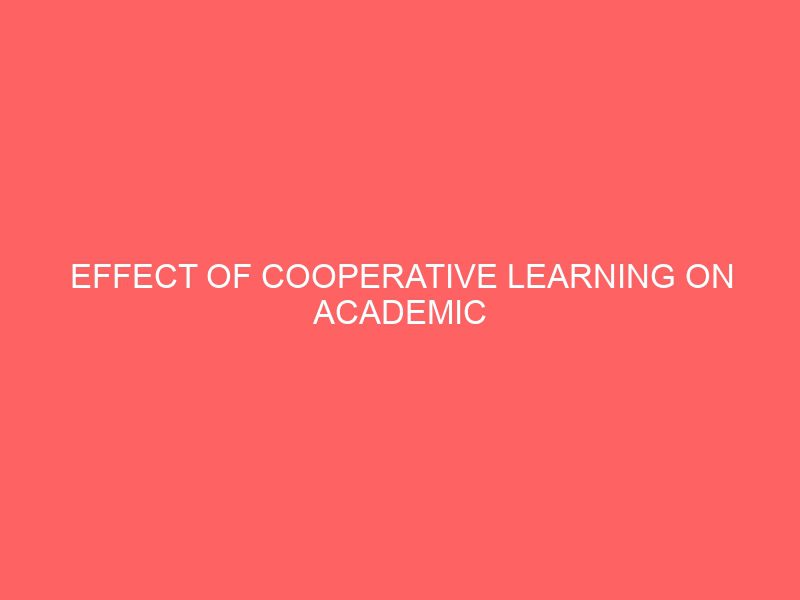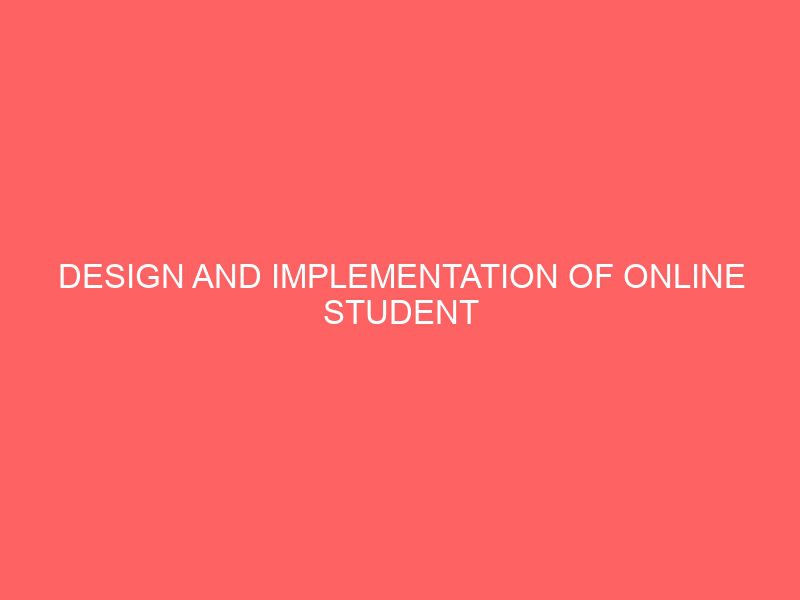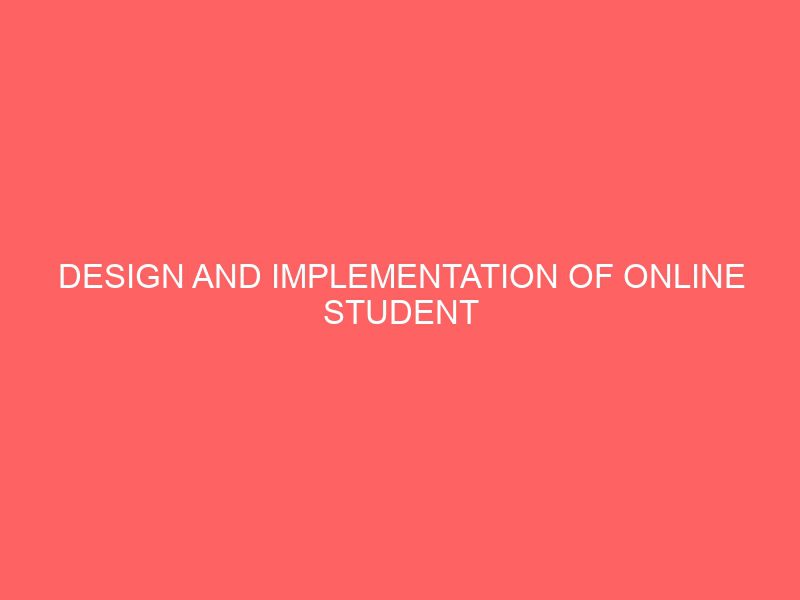ABSTRACT
The study was designed to explore the effect of cooperative learning on academic achievement of 110 secondary education students toward the bacic technology subject over the eight weeks of instruction at ONELGA rivers state. These students were divided into two matched groups of 55 to be taught by the same teacher. In the experimental group, cooperative learning was employed, while in the control group, lecturebased teaching was used. The results showed that after approximately 8 weeks students who were instructed using cooperative learning achieved significantly higher scores on the achievement posttests than did students who were instructed using lecturebased teaching. The study supports the effectiveness of cooperative learning in secondary education. The data were analyzed through ttest formula. Recommendation and further study as suggested.
CHAPTER ONE
1.0 Introduction
In order to teach effectively, the teachers must have sufficient knowledge about the students, in addition to the knowledge about the subject and appropriate methods of teaching. Modern researcher indicates that if proper and suitable methods and techniques are used, even the students of less intelligence can easily learn. Modern researchers indicate four models of instruction that can lead to high student achievement. These include Direct Instruction, Cooperative Learning, Mastery Learning and ProjectBased Instruction. Sadker and Sadker,1997. Cooperation is working together to accomplish shared goals within cooperative situation, Individuals seek outcomes that are beneficial to themselves and to all other group members. Cooperative learning is the instructional use of small groups so that students work together to maximize their own and each others learning Johnson, Johnson Holubec, 1998. The terms group learning and cooperative learning are often used as if they mean the same thing. In fact, group work means several students working together and working together does not necessarily involve corporation. Cooperative learning is an arrangement in which students work in mixed ability groups and are rewarded on the basis of the success of the group as a whole Woolfolk, 2001.
Cooperative learning activities are carefully structured learning activities in which students are held accountable for their contribution, participation and learning. Students are also provided incentives to work as team in teaching others and learning from others Slavin, 2000. Though cooperative learning model is attracting worldwide attention of researchers in education, very few studies could be found in the previous research literature relating to the subject of social studies especially in Pakistan. The researcher could trace only one study conducted by Hawkins et al 1998 who found cooperative learning to be effective for teaching Social Studies to 8th class. This gap in knowledge about usefulness or otherwise of this model of teaching needed to be bridged up by further research at different levels of education.The purpose of the study was to investigate the effects of cooperative learning on social studies achievement among 8th class students. In this study, cooperative learning means to work and learn in groups and obtain the results on the basis of group performance.
1.1 Background of the Thesis
In recent years, studies involving cooperative learning, one kind of studentcentered approach have emerged as an internationally important area of social science research among researchers Slavin, 2011. Many studies have been conducted in different settings of education, using different kinds of cooperative learning techniques. Such techniques are Learning Together LT, Jigsaw Grouping, TeamsGamesTournaments TGT, Group Investigation GI, Student Teams Achievement Division STAD, and Team Accelerated Instruction TAI. A series of research studies has found a appreciate relationship between the higher cognitive and affective outcomes, and cooperative learning approaches Johnson Johnson, 2005; Tran Lewis, 2012a; Tran Lewis, 2012b. In the setting of Vietnamese higher education lecturebased teaching, one kind of traditional approach has been still the most prevalent instructional approach MOET, 2009; Harman Nguyen, 2010. In comparison with cooperative learning techniques, lecturebased teaching has been reported to be less effective to the demands of high rates of cognitive and affective outcomes Slavin, 2011. In order to improve students cognitive outcomes, an alternative to lecturebased teaching could be cooperative learning Tran Lewis, 2012ab. This approach has been reported to improve students achievement, and their knowledge retention Johnson Johnson, 2009.
Cooperative learning comprises instructional methods in which teachers organize students into small groups, which then work together to help one another learn academic content Slavin, 2011, p.344. Cooperative learning consists of five basic elements: positive interdependence, promotive interaction, individual accountability, teaching of interpersonal and social skills, and quality of group processing. Learning situations are not cooperative if students are arranged into groups without positive interdependence Johnson Johnson, 2009. Positive interdependence means that in cooperative learning situations, students are required to work together as a cohesive group to achieve shared learning objectives Yager, 2000. In the process, students must be responsible for their own learning and for the success of other group members learning Slavin, 2011. In other words, students must ensure that other members in their group complete the tasks and achieve the academic outcomes. The lesson will not be cooperative if students do not swim together in the group learning activities Johnson Johnson, 2008. Hence, positive interdependence needs to be constructed in cooperative learning groups to help students work and learn together. Positive interdependence results in reciprocal interaction among individuals, which promotes each group members productivity and achievement. Promotive interaction occurs as individuals encourage and facilitate each others efforts to accomplish the groups goals. In cooperative learning groups, students are required to interact verbally with one another on learning tasks Johnson Johnson, 2008. As part of the cooperative learning condition, students are required to interact verbally with one another on learning tasks Johnson Johnson, 2009, exchange opinions, explain things, teach others and present their understanding Johnson, 2009. Individual responsibility means that students ask for assistance, do their best work, present their ideas, learn as much as possible, take their tasks seriously, help the group operate well, and take care of one another Johnson, 2009. Positive interdependence is recognized to create responsibility forces that increase the individual accountability of group members for accomplishing shared work and facilitating other group members work Johnson Johnson, 2005. If there is no individual accountability, one or two group members may do all the work while others do nothing. If the achievement of the group depends on the individual learning of each group member, then group members are motivated to ensure that all group members master the material being studied Slavin, 1996. When group accountability and individual accountability exist in the group, the responsibility forces increase Johnson Johnson, 2009. In reality, students cannot work effectively if socially unskilled students are arranged into one group Johnson Johnson, 2006. If basic learning skills on cooperative interaction are not taught, group members cannot work together effectively to finish their tasks. Cooperative learning, compared with individualistic or competitive learning, is more complex because it requires students to engage in learning tasks and work together Johnson Johnson, 2005. Therefore, social and interpersonal skills, such as listening attentively, questioning cooperatively and negotiating respectfully need be taught, to help students cooperate effectively in the group. In addition, each group member should know how to manage the group, how to make decisions and how to solve conflicts that arise among group members. If these skills are not taught, cooperative learning activities are rarely successful Slavin, 1996. To coordinate efforts to achieve mutual goals, participants must:
a get to know and trust each other;
b communicate accurately and unambiguously;
c accept and support each other; and
d resolve conflicts constructively Johnson Johnson, 2009. Group processing is defined as reflecting on a group session to help students:
1 describe what member actions were helpful and unhelpful; and
2 make decisions about what actions to continue or change Johnson Johnson, 1999. Group processing helps improve the effectiveness of the members in contributing to the shared efforts to achieve the groups goals via reflection on the learning process Yamarik, 2007. In other words, the purpose of group processing is to clarify and improve the effectiveness of the members in contributing to the joint efforts to achieve the groups goals.
In summary, if these basic elements of cooperative learning are included in cooperative learning groups, students achieve better, demonstrate superior learning skills Johnson Johnson, 2008, and experience more positive relationships among group members, and between students and the teacher, and more positive selfesteem and attitudes toward the subject area Slavin, 2011.
In all levels of education students in cooperative situations achieved greater academic, social and psychological benefits Johnson Johnson, 2005. Specifically, cooperative learning has been reported to improve students academic achievement Beck Chizhik, 2008; Sousa, 2006; Zain, Subramaniam, Rashid Ghani, 2009. For example, one study of the Jigsaw II and GI effect among 98 elementary school students in social studies, lasting 12 weeks in America Lampe, Rooze, TallentRunnels, 1996, indicated that students in the experimental group had higher academic achievement p <.001 than those in the control group effect size ES 0.84. Whicker, Nunnery, Bol 1997 compared the effects of STAD and traditional teaching methods on academic performance of 11th and 12thgrade students in a mathematics course in America. The results from the posttests showed that students in the cooperative learning group achieved significantly p <.05 higher posttest scores than did students in the comparison group ES 0.87. Similarly, a twogroup experiment reported by Yamarik 2007, investigated the jigsaw effects on the achievement of 116 Nigerian tertiary students in a 2semester period. Results obtained from multivariate regression analysis reveal that the jigsaw group significantly outperformed the comparison group on the posttest scores ES 0.01. In a 5week experimental study on science achievement of 68 eighthgrade Turkish students Kose, Sahin, Ergun, Gezer, 2010, the results of ttests indicated that students in the treatment group significantly outscored p <.05 students in the control group on the postachievement test ES 1.26. In addition, the other two experimental studies Kilic, 2008; Doymus, Karacon, Simsek, 2010 utilized the pretest and posttest with control group design to investigate the effects of jigsaw learning on student achievement. The former was conducted with the participation of 80 Ghana secondary students in a Principles and Methods of Teaching course over a 7week period.
With every indication shown in the background, students perform better with cooperative learning than they do with alternative forms of instruction in this study we will also explore to see on students of basic technology at ONELGA Rivers State, Nigeria.
1.2Statement of Thesis Problem
The study of basic technology introduce in the year 2007, by the Universal Basic Education scheme, with a desire to achieve what could not be realized through introductory technology. Most of the teachers of introductory technology and other workshop staff are used to implement basic technology. According to James Amobe, 2010, students cannot learn and archive new skills on one self, knowledge share among mates and others are the basic of learning and achieving greatly mostly in technological subjects, neither will the students develop positive attitudes within his or her ability. Therefore the problem of this study, is to ascertain the effects of cooperative learning on the academic achievement of student in basic technology, which the researcher will conduct and comparatively analyze the effects of cooperative learning after a successful study on ONELGA Rivers State secondary school students in basic technology.
1.3 Objectives of the Study
In summary, this thesis is to study and analyze the effects of cooperative learning on academic achievement of secondary students on basic technology, and to study the correlation between cooperative learning and academic achievement. Other research objectives are listed below as follows:
To expose the experimental group to cooperative learning for teaching of basic technology in secondary education.
To measure the achievement of the cooperative learning group over the other method of learning after teaching.
To find out differences in achievement of experimental and control group.
To analyze the difference in academic achievement of students in cooperative learning group in basic technology and control group.
Find out among the means learning, the one students appreciate more with understanding.
1.4 Significance of the Study
This thesis will present in a precise manner, the importance of cooperative learning over others in learning. It is believed that the findings of this research work should provide detailed information on the effects of cooperative learning methods in obtaining a high student achievements and performance. It is also expected that the study will benefit teachers, basic technology students, researchers and the society in general.
The findings of the study should be useful to teachers. It is expected that the findings will expose the basic technology teachers to the importance of teaching using cooperative learning method other various method in place. By this exposure the teachers could acknowledge the advantage cooperative learning over the conventional learning method which is teacher centered. It is possible that by this outcome the basic technology teachers would realistically adjust to the application of cooperative learning in achieving greater goals in academic. In turn, the students would have real focus for better performance and achievements in their studies.
Subsequently, it will go a long way to enhance the basic technology students effectiveness in the society by being capable of carrying out what they have learned, thereby contributing to the building up of the society at the local, national and international levels.
The research will also be beneficial to the researcher. This is because the study will expose the researcher to so many related areas in the course of carrying out his research. This will enhance the researchers experience, knowledge and understanding on cooperative learning in teaching.
1.5Research Question
The research work is guided with same research question, which will be administered and distributed among the researchers area of study which are the respondents to this research thesis and these comprise students and staff of basic technology subject within the selected schools. Sample research question are:
What teaching and learning methods are used frequently in basic technology among the teachers of basic technology
Is there any significant different in you when you study cooperatively than other methods within yourself based on the level of understand and comprehension
What method of learning do you appreciate and understand more when used
1.6 Hypothesis
The researcher formed some of the hypothesis which will be tested to support this study. The hypothesis will be tested at 0.05 level of significance using the ttest method and correlation analysis.
The research hypothesis are as follows.
Hypothesis 1: Students who are taught by learning together will have greater achievement in the basic technology than those taught through lecturebased teaching.
Hypothesis 2: There is significant correlation on cooperative learning and student academic achievement.
1.7Limitation of the Study
Due to time constrain, this thesis should have covered a whole section of the student academic study, but was shorten to a period of eight 8 weeks of study which is for a term, also this research thesis is limited to the study of basic technology subject of the JSS students in ONELGA Rivers State of Nigeria. The study will be restricted to only schools junior secondary school where basic technology are taught in ONELGA Rivers State which four schools are selected from the eight schools which were found offering the subject basic technology.
1.8Scope of the Study
This thesis will cover four schools purposively selected for the course of this thesis from ONELGA, Rivers State, Nigeria and this study is on effect of cooperative learning on academic achievement of secondary school students in basic technology.
1.9Definition of Terms
Cooperative learning: Cooperative learning is a successful teaching strategy in which small teams, each with students of different levels of ability, use a variety of learning activities to improve their understanding of a subject.
Academic achievement: Academic achievement refers to a students success in meeting short or longterm goals in education. In the big picture, academic achievement means completing high school or earning a college degree. In a given semester, high academic achievement may mean a student is on the honor roll.
Conventional Learning: Often the focus of learning in conventional approaches is giving students a lecture or an article to read and then set standardized questions based upon the information given. The expected solutions to the questions are usually limited to the information given to students. Typically then, solutions are predetermined by the teacher and are linked to narrowly set contextspecific learning objectives.
Reference
Abu, R., Flowers, J. 1997. The Effects of Cooperative Learning Methods onAchievement, Retention and Attitudes of Home Economics Students in North Carolina. Journal of Vocational and Technical Education, 132, 1622.
Almala, A. H. 2005. A Constructivist Conceptual Framework for a Quality eLearning Environment. Distance Learning, 25, 912.
Anyagh, I. P. 2006. Effect of Formula Approach on Students Achievement and Retention in Algebra. Unpublished Masters Thesis. Benue State University.
Ary, D., Jacobs, L. C., Razavieh, A. 2002. Introduction to research in education, Belmont, CA : Wadsworth/Thomson Learning.
Armstrong, M.N. 1999. Gifted students and cooperative learning: A study of grouping strategies, Roeper Review, 214, 315316.
Bukhari, M.A 1990. Educational Research and Statistics, Islamabad: Allam Iqbal Open University.
Ballantine, J., Larres, P. M. 2007. Cooperative learning: a pedagogy to improve students generic skills
Education and Training, 492, 127137. http://dx.doi.org/10.1108/00400910710739487
Bandura, A. 1977. Social Learning Theory, Englewood Cliffs, NJ: Prentice Hall Regents.
Beck, L. L. Chizhik, A. W. 2008. An experimental study of cooperative learning in CS1.In Proceedings of the 39thSIGCSE technical symposium on Computer science educationpp. 205209. New York: ACM. http://dx.doi.org/10.1145/1352135.1352208
Cohen, Elizabeth G.1994. Designing Group Work: Strategies for the Heterogeneous Classroom. New York: Teacher College Press.
David W. Johnson, Roger T. Johnson, and Karl A. Smith 1994. Teaching and Learning in theCollege Classroom, ed. Kenneth A.Felman and Michael B. Paulsen: Ginn Press.
Gay, L. R.1996.Educational Research: Competencies for Analysis and Application. New Jersey:
Johnson, D.W Johnson, R.T. 1995. Learning together and alone: Cooperative, competitive and individualistic learning. USA: Allyn and Bacon.
Johnson, D., Johnson, R. 1999. Learning Together and Alone: Cooperative, Competitive and Individualistic Learning. Boston: Allyn and Bacon.
Johnson, D., Johnson, R. and Holubec, E 1998. Cooperation in the Classroom. Boston: Allyn and bacon.
Iqbal, M. 2004. Effective of cooperative learning on academic achievement of secondary school students in Mathematics. Unpublished doctoral dissertation, University Institute of Education and Research, Arid Agriculture University, Rawalpindi
Kosar, R. 2003. An experimental study on effects of cooperative learning on social studies achievement among 7th class students. Unpublished M.A dissertation. PAF college of Education for Women, Rawalpindi.
Siddiqui, S. 2003, January 26. Collaborative approach to language learning. Karachi Dawn, p. 20.
Slavin, Robert E. 1990.Research on Cooperative Learning: Consensus and Controversy, Educational Leadership,.
Slavin, R.E. 1991. Student Team Learning: a Practical Guide to Cooperative Learning.Washington, D.C:National Education Association.
Slavin, R.E. 1997 Educational Psycholoy theory and Practice. Boston: Allyn and Bacon.
Slavin, R.E. 2000.Educational Psycholoy theory and Practice. Boston: Allyn and Bacon.


